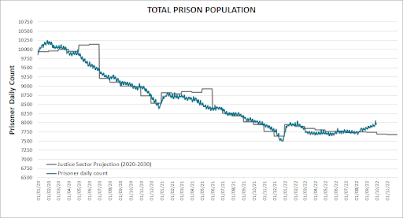My first reaction to today's following NZ Herald headline was incredulity:
One big idea - what PM Jacinda Ardern would do if money was not a factor
Why pose such a redundant proposition when governments are scrambling to spend less? Well, most governments.
But then I thought the answer might shed light on just how naive and ineffective the PM is.
Her big idea? Free early childhood education.
“I’d make it completely free. Completely free. And when I say completely free, I’d also give choice to families about at what point and stage their child accesses it. Because for some we know it provides stability to kids that they might not have in their home life.”
Hang on. Back up. Isn't this putting the cart before the horse?
Perhaps you need to address why 'some' kids don't have stability in their home life.
You've already thrown a whole lot more money at the problem due to the first wrong diagnosis and now there are thousands more children in unemployed homes. Dare I say it, unstable homes.
But let's look at the evidence the PM might be inclined to take heed of. Evidence produced under her own administration.
Whether or not early childhood education improves outcomes for children is at best controversial.
In 2019 the Auckland University of Technology (AUT) prepared a paper for MSD which asked, ‘Is participation in Early Childhood Education related to child health and development?’
It reported numerous studies (including American, British, Australian) which found the larger the quantity of time spent in non-maternal care, the greater negative effects were. For instance, “A Swiss study has also found that the accumulation of time in group-based childcare specifically was associated with greater externalising (aggression, ADHD symptoms, non-aggressive externalizing behaviours) and internalising (depression, anxiety) behaviours at 7 years.”
AUT noted however, “The Christchurch Health and Development Study found that ECE participation over time was not significantly associated with behavioural outcomes in childhood and adolescence once sociodemographic factors, child-rearing practices and child characteristics were accounted for.”
Analysing recent Growing Up in New Zealand data AUT then concluded, “…more time in ECE per week was inversely associated with the development of emotional difficulties and peer problems.”
This finding, however, is not particularly robust.
Social, emotional and behavioural difficulties (via SDQ) were measured at 24 months. Children in full-time maternal care rated the highest level of ‘abnormal’ difficulties at 21.2 percent. Children in centre-based care recorded only 13.9 percent.
But the highest levels of abnormal difficulties also occurred with unemployed mothers (22.8%) and benefit recipient mothers (36.9%) – the group most likely to be parenting full-time.
The paper’s authors acknowledge, “parents who are employed are more likely to need, afford, and use ECE; this tendency will ‘select’ a particular group of children, many of whom may have different behavioural and health profiles to the converse group.”
Furthermore, in describing the limitations of the paper:
“It is possible that the positive association between child behaviour and ECE is in part due to children with behavioural difficulties being excluded from ECE (reverse causation). Unlike primary school, there is no requirement for early childhood education services to take children who have conduct or peer problems. It is also possible that parents with full time childcare responsibilities of two-year children may rate their behaviour as worse than the parents of children in childcare, because they see them all the time (so may be more aware of their behaviour) and also due to the increased stress of parenting fulltime… Given limitations in the data collection noted elsewhere, it is not possible to determine why attendance appears to protect against emotional difficulties and peer problems, and hence why this finding contrasts with previous research.” (my emphasis)
This inconclusive research could nevertheless be used as an argument to get more children from 'unstable' homes into ECE.
But, and it's a massive 'but', primary school is free (and compulsory) and attendance amongst children from transient (geographical and maternal relationship-wise), dysfunctional families can range from non-existent to patchy. Why would ECE attendance be different?
Probably some level of ECE for children from well-adjusted families is fine (though I still regret buying the 'socialization' idea with my first.)
The problem of children suffering 'abnormal' difficulties often associated with a benefit-dependent parent(s) will not be solved by ever greater removal of responsibility from the parent. Broken families can't be healed by herding their children into daycare. An ECE teacher cannot be the mother who needs to bond physically and emotionally with her child through constant and positive touch and talk from day one. Free ECE cannot possibly fill the void that comes with not being a wanted child.
We should be glad there is no money for the Prime Minister to indulge in yet another distracting, poorly thought-out, bad idea.

















